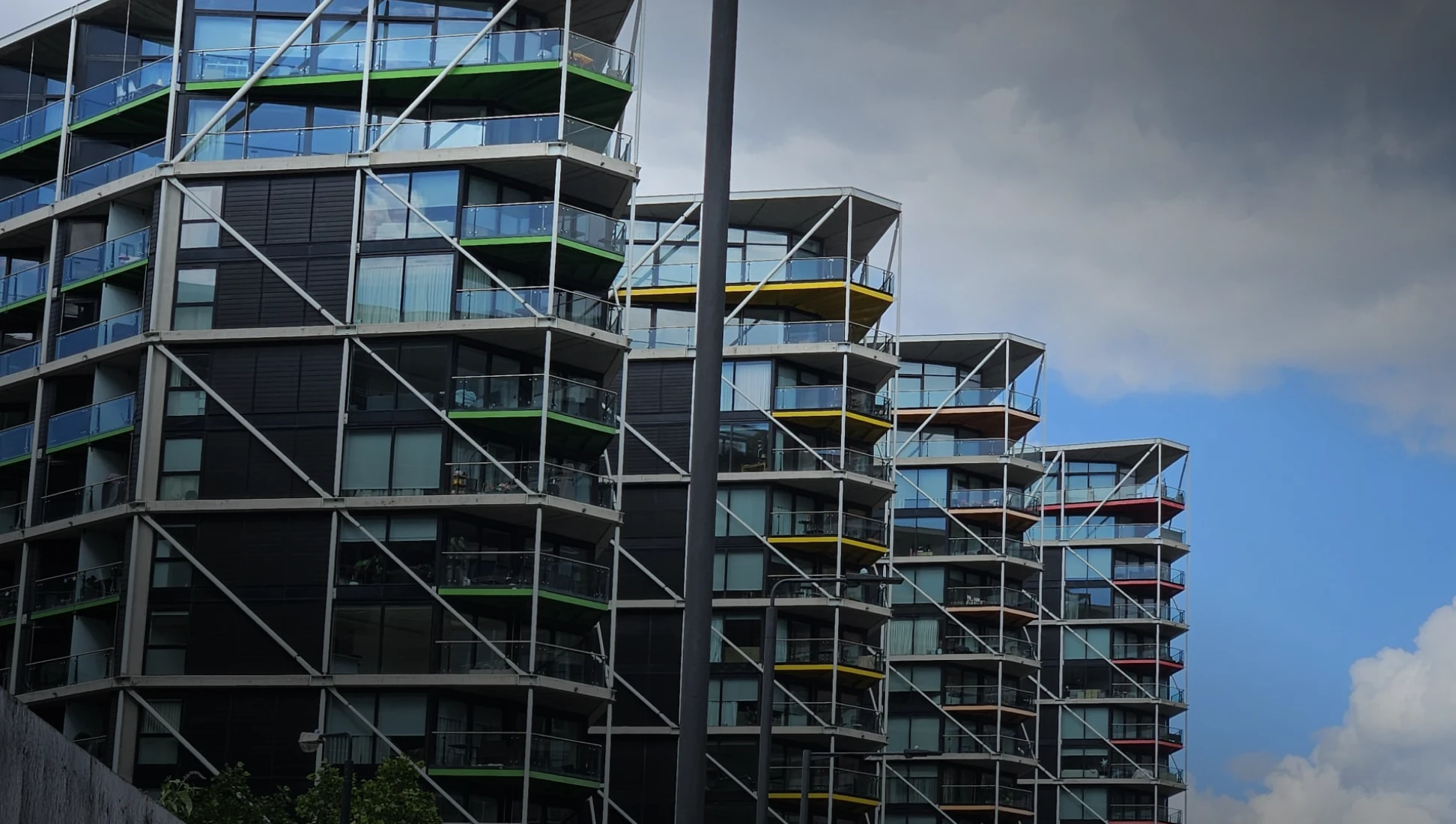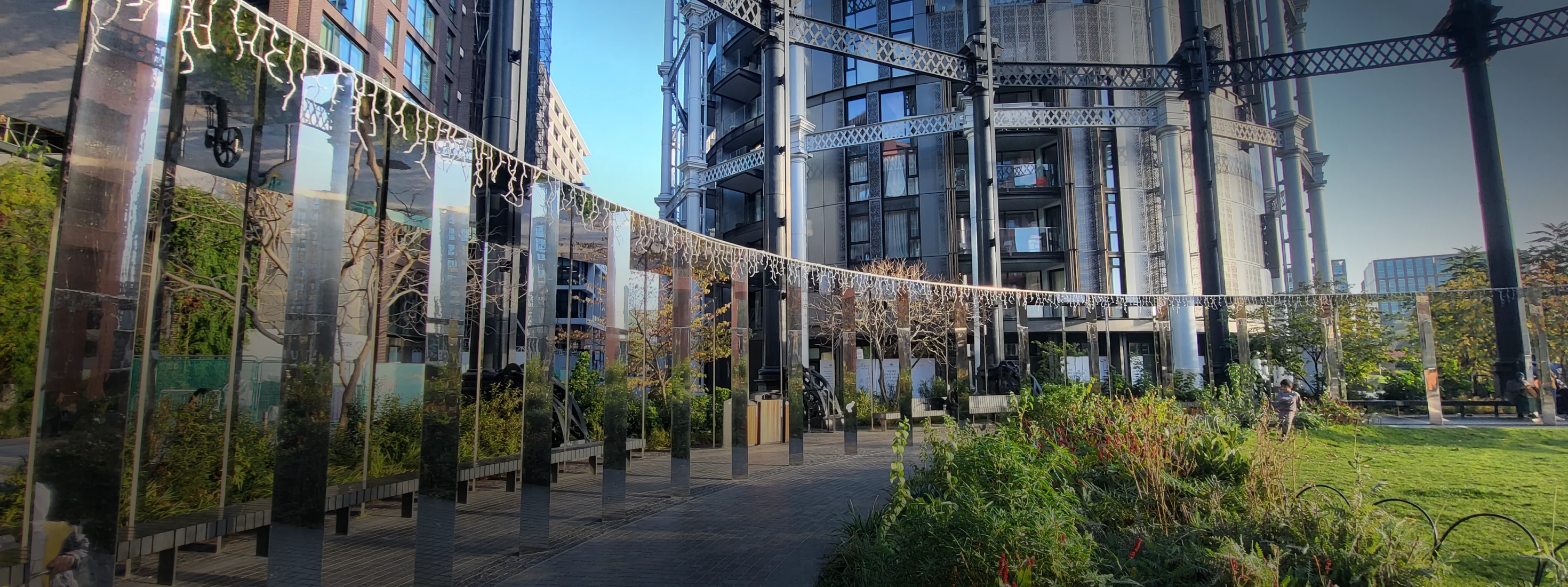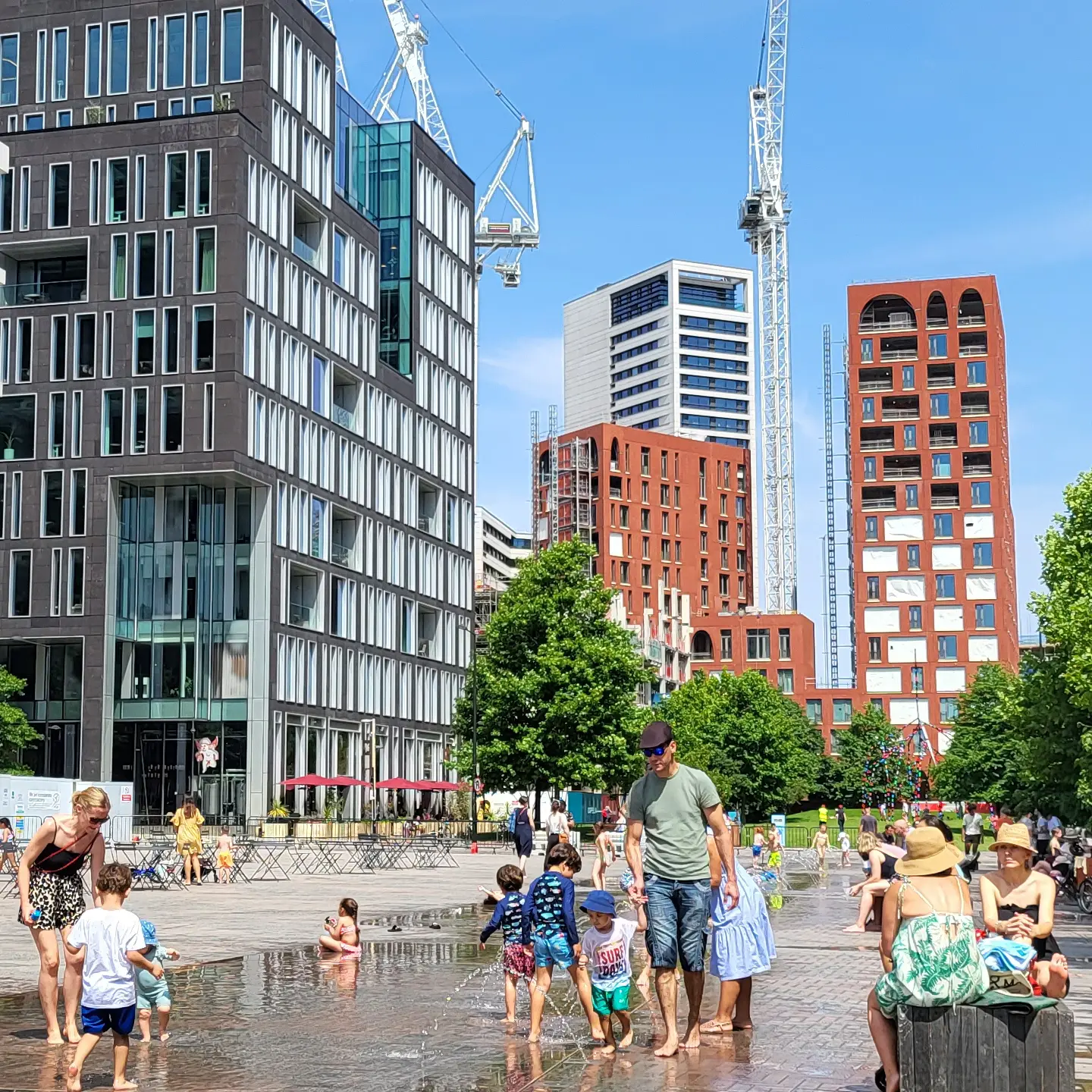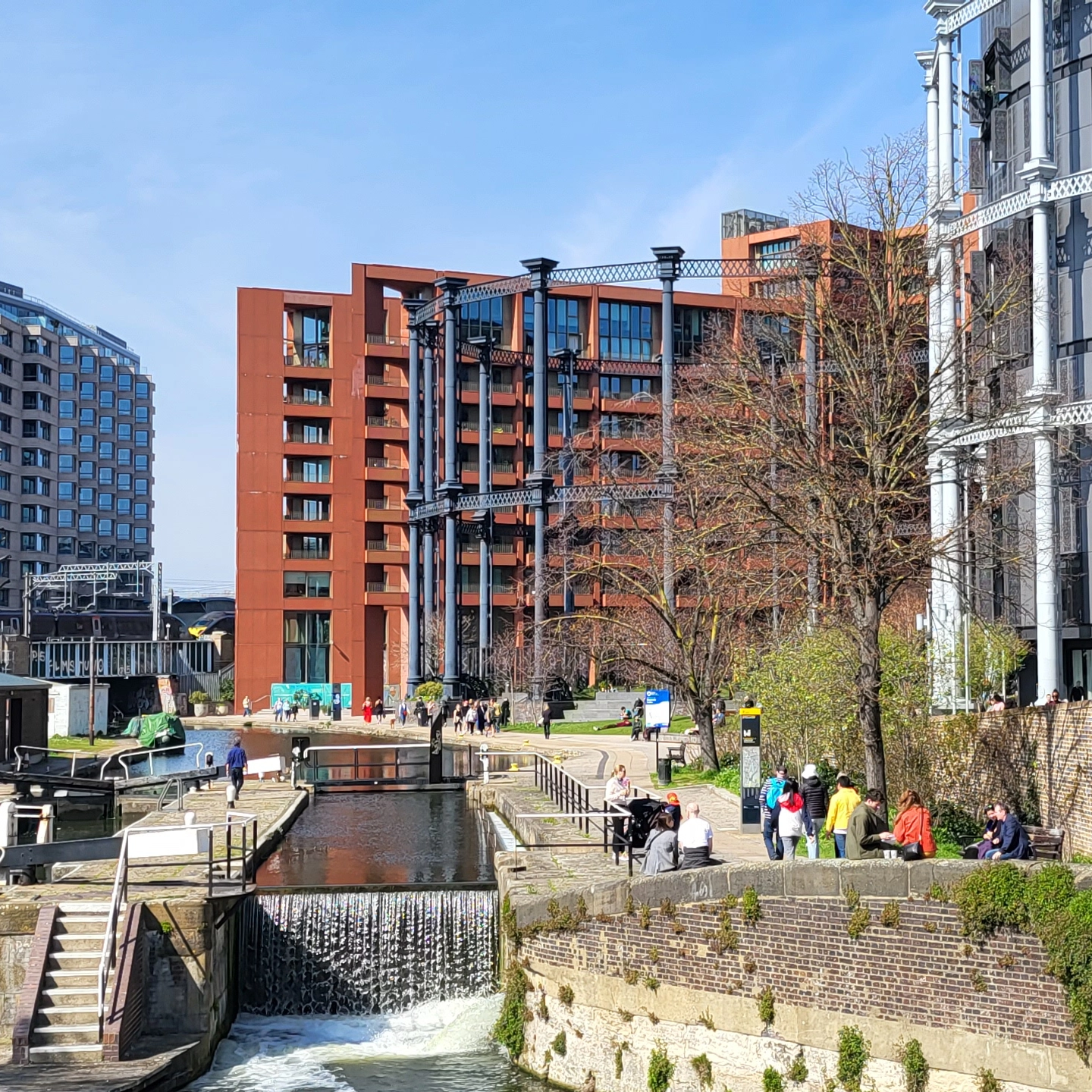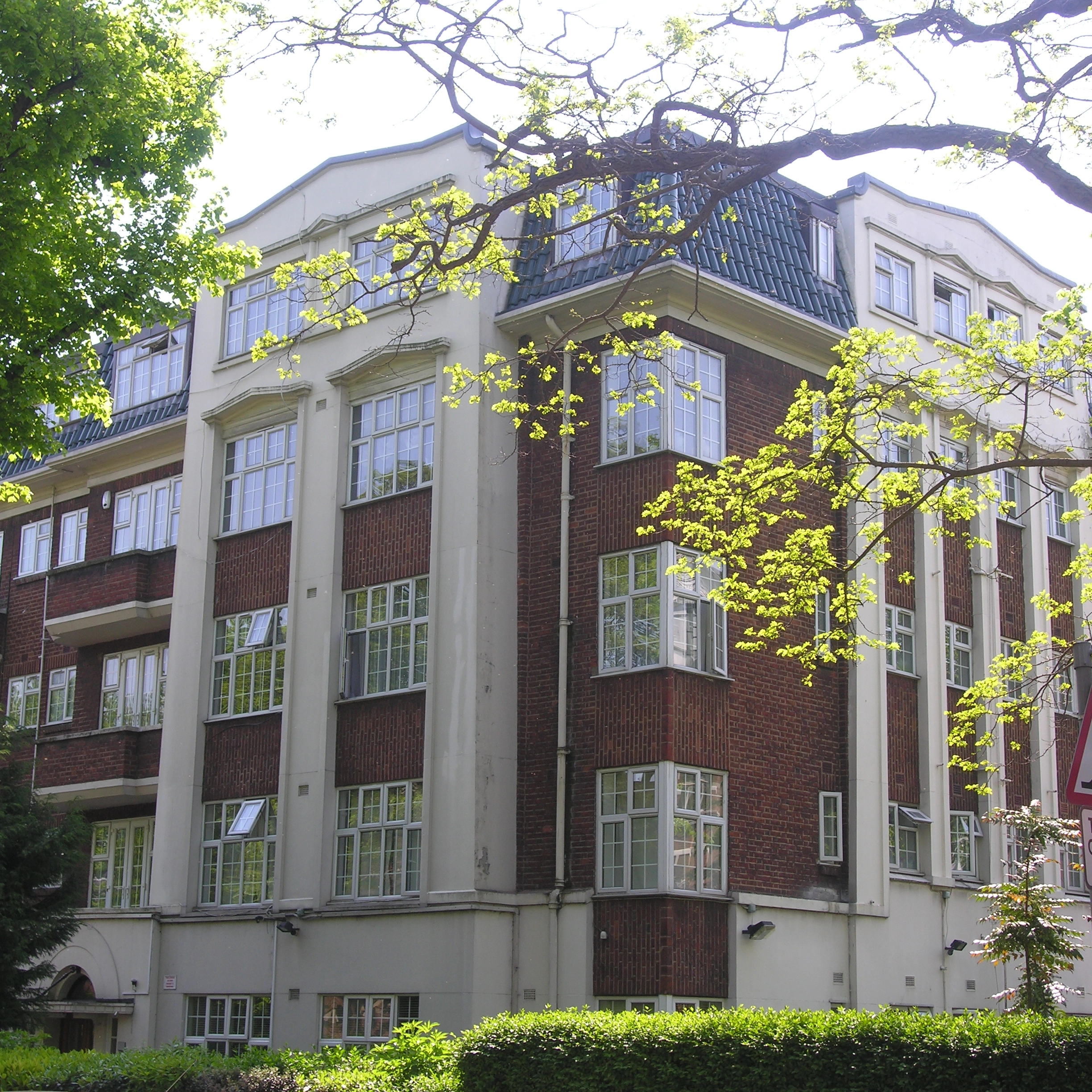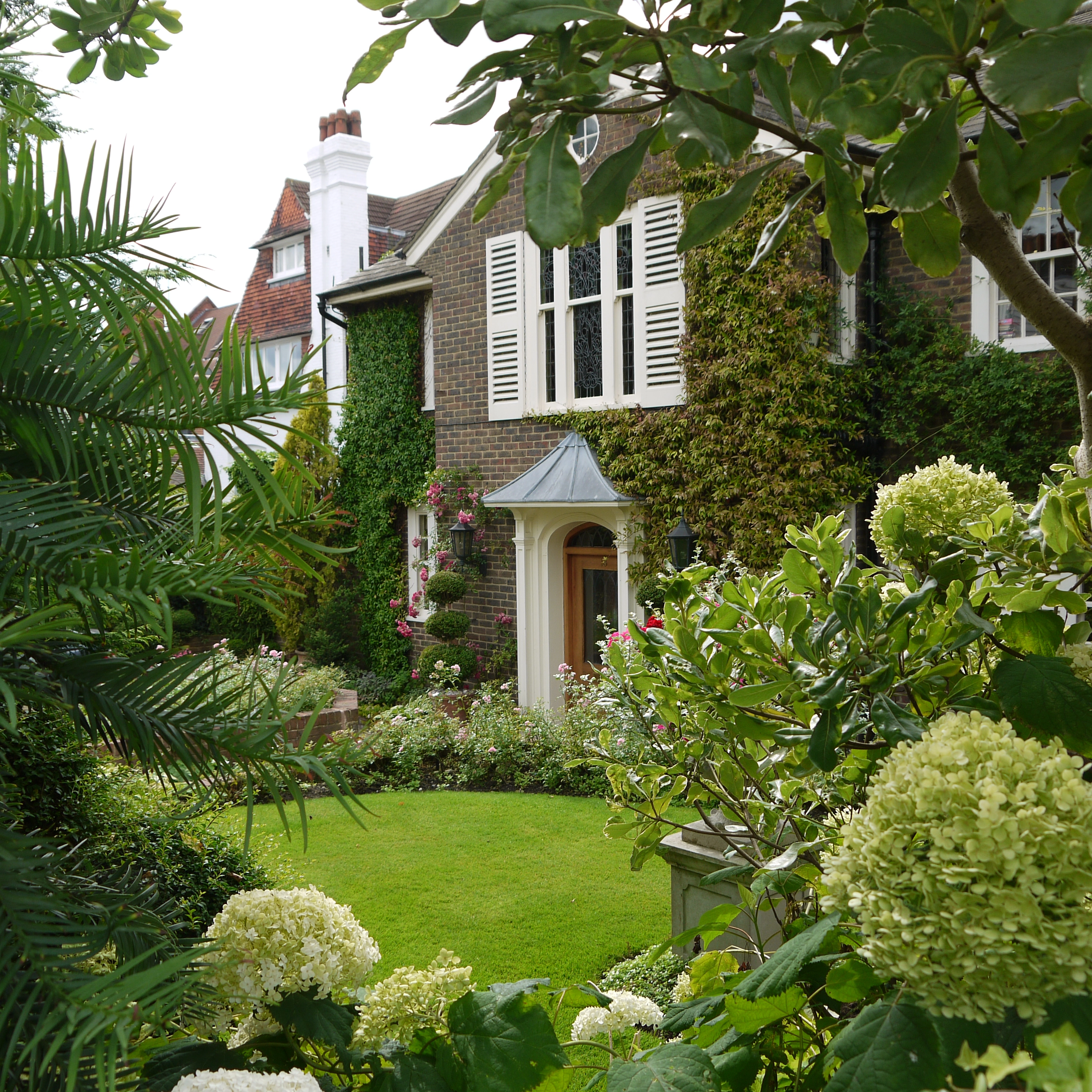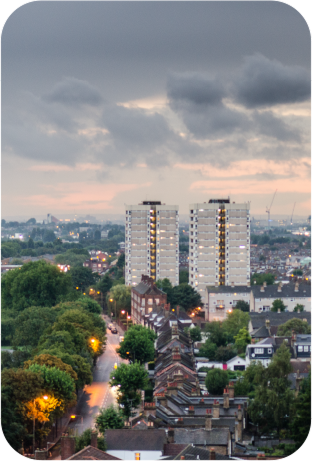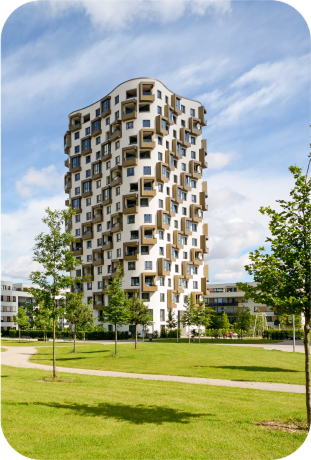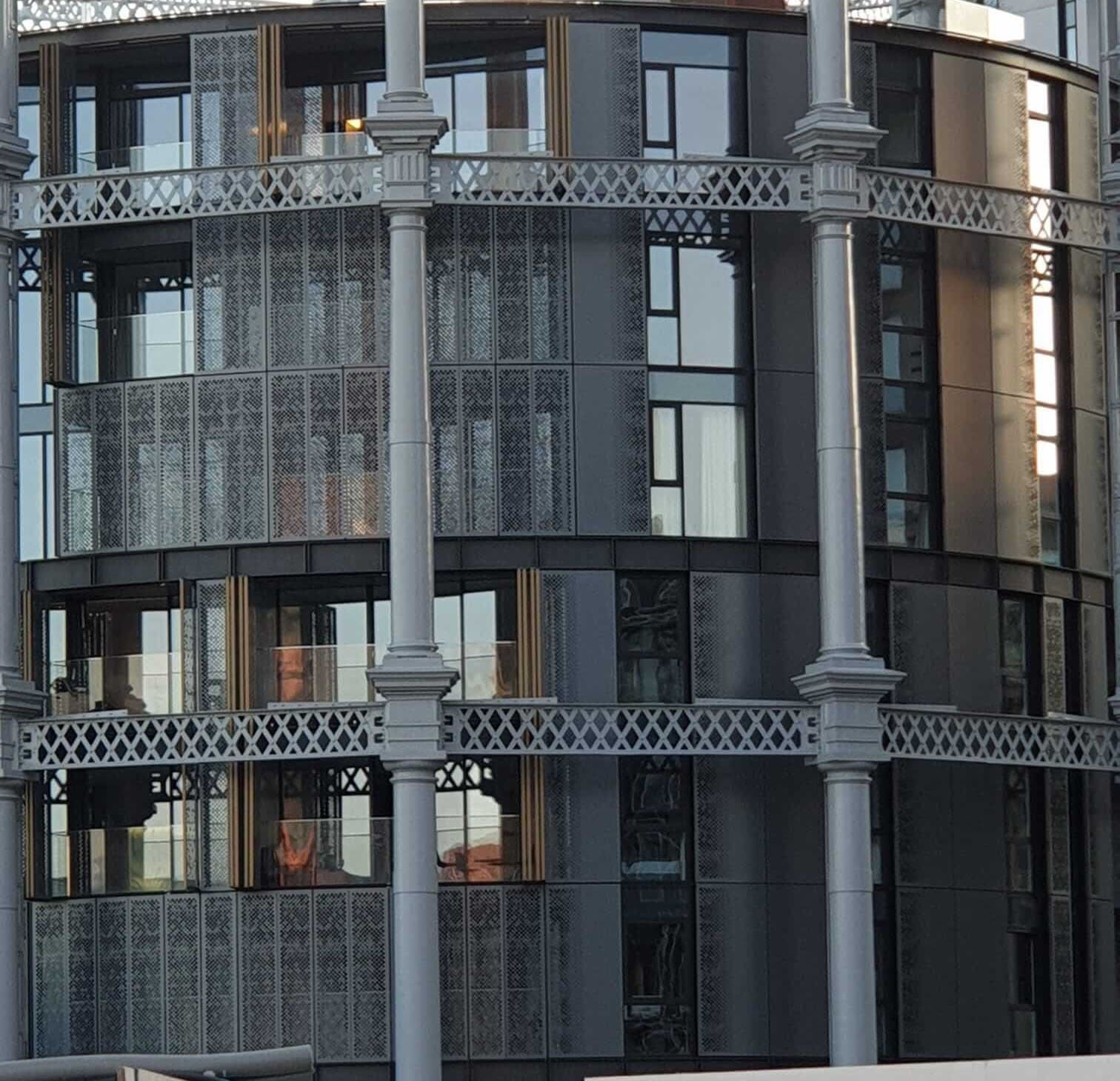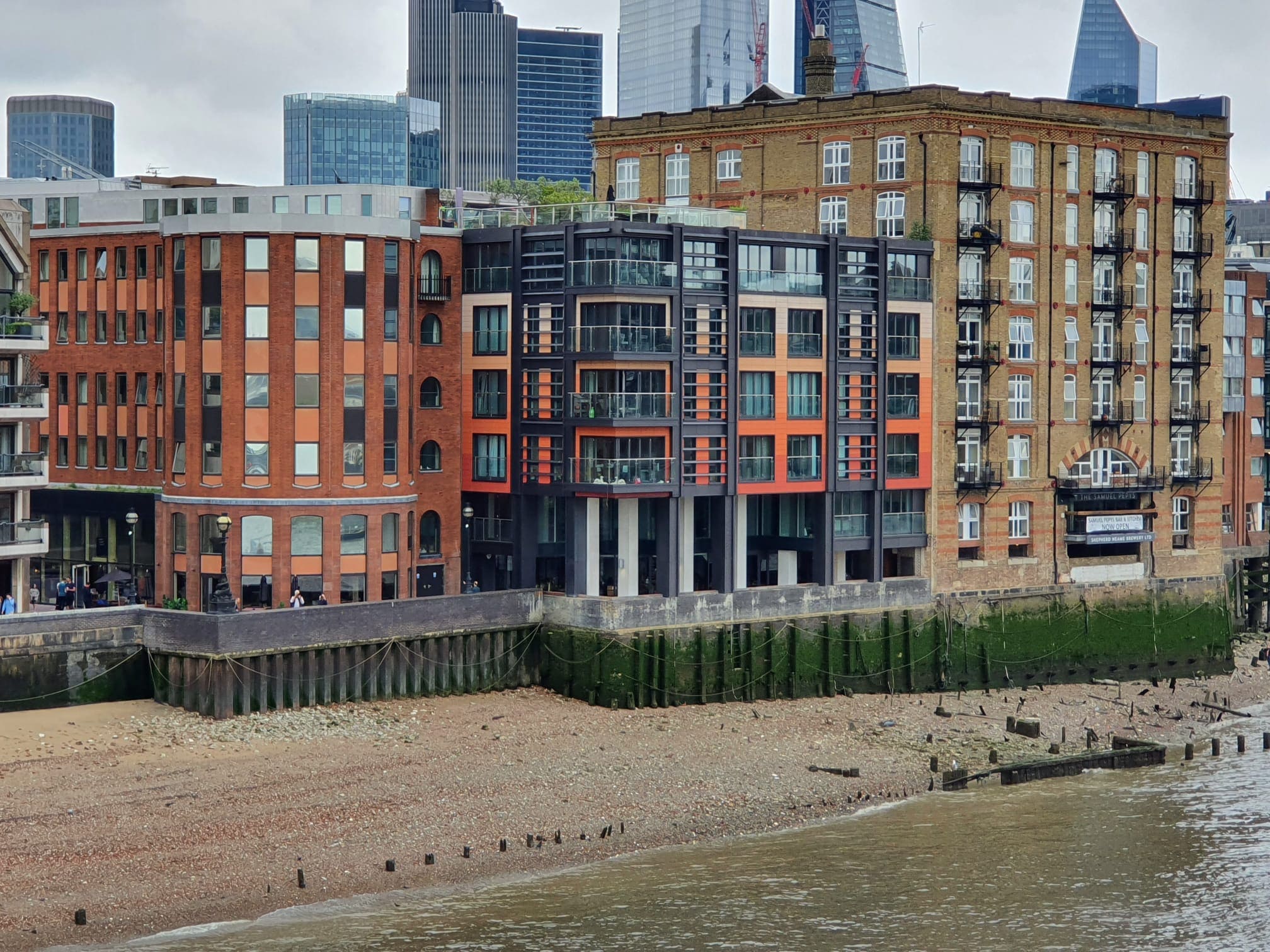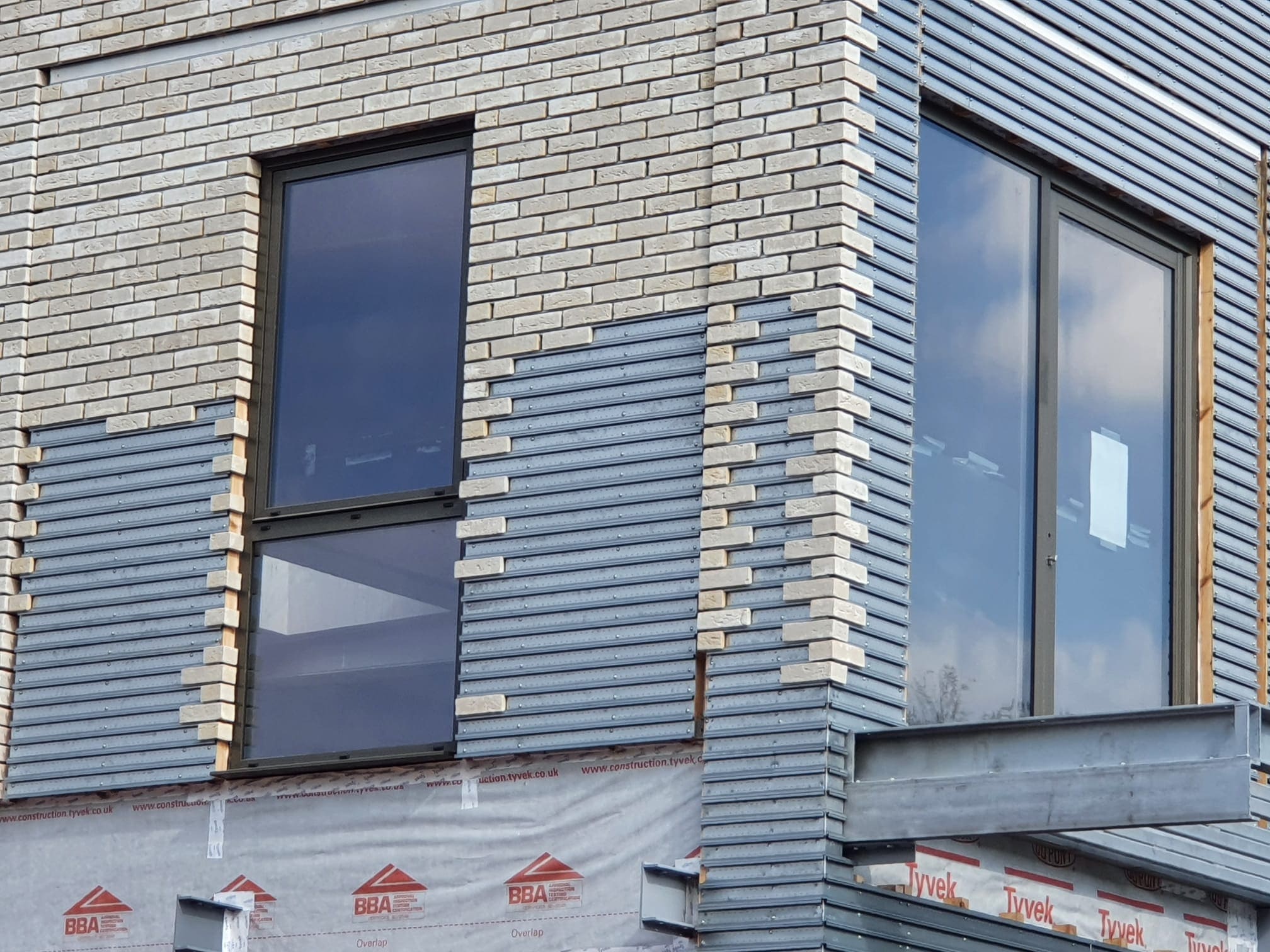



Block and Estate Management is about the minutia done well: the role of a Managing Agent is technical, administrative, practical and political. It takes joined up thinking to do what we do well as well as sufficient resource to react to whatever is necessary day-to-day.
As a Managing Agent we know our true business is building relationships with people. Our people are empowered and know that they can make a difference to how people feel about where they live. We call our 'Property Manager's 'Relationship Managers’ to embody our values which are to build relationships, add value, and to take the initiative. We lead the market in transparency and focusing on risk, cash, repairs and place making, usually in that order, and was the first Managing Agent to introduce a ' money back guarantee ’.
Being who we are would be impossible without our passionately committed people, whose qualifications we sponsor and who we support professionally to be the best they can be, as achieving a national training award and our Silver IIP status confirms.
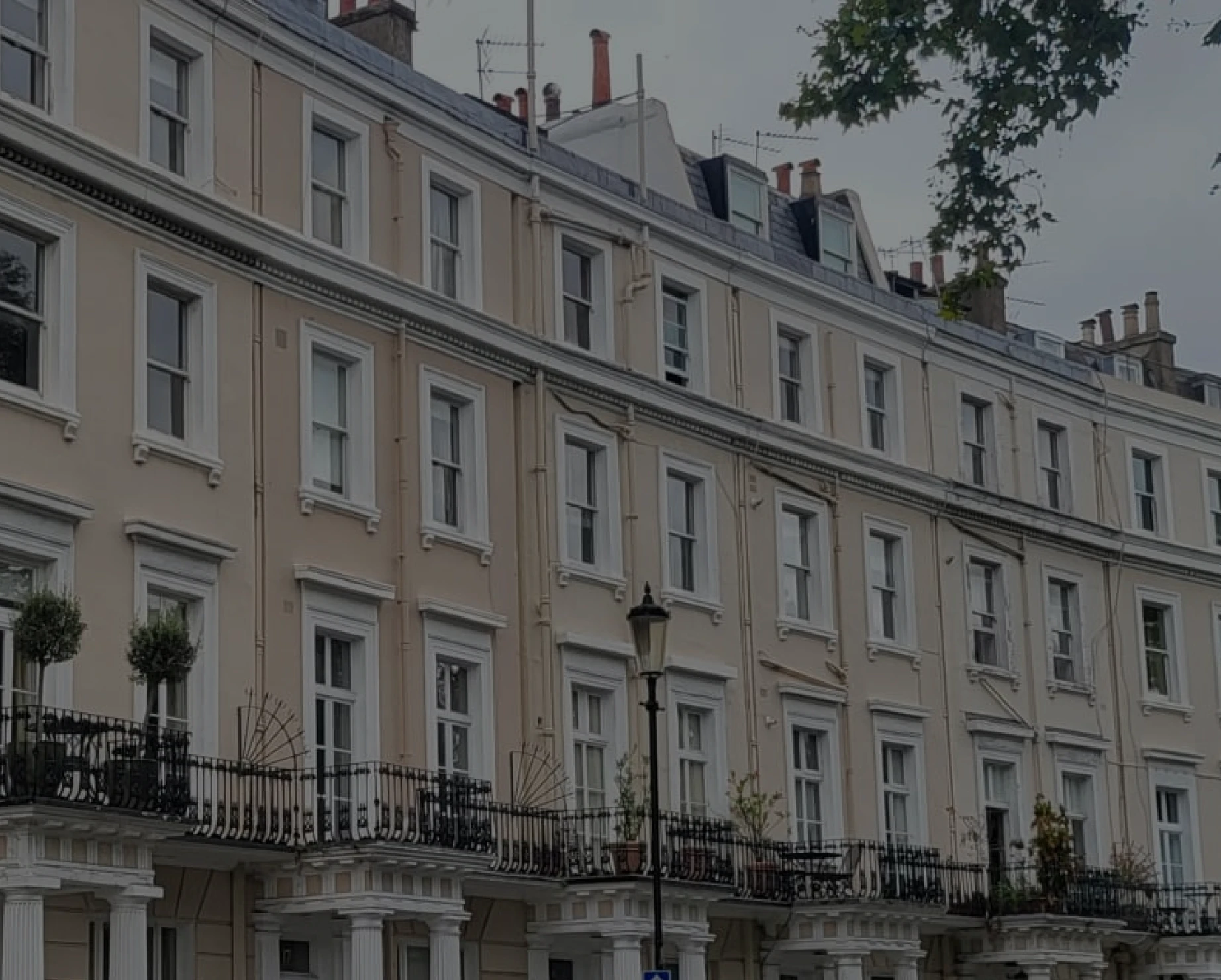

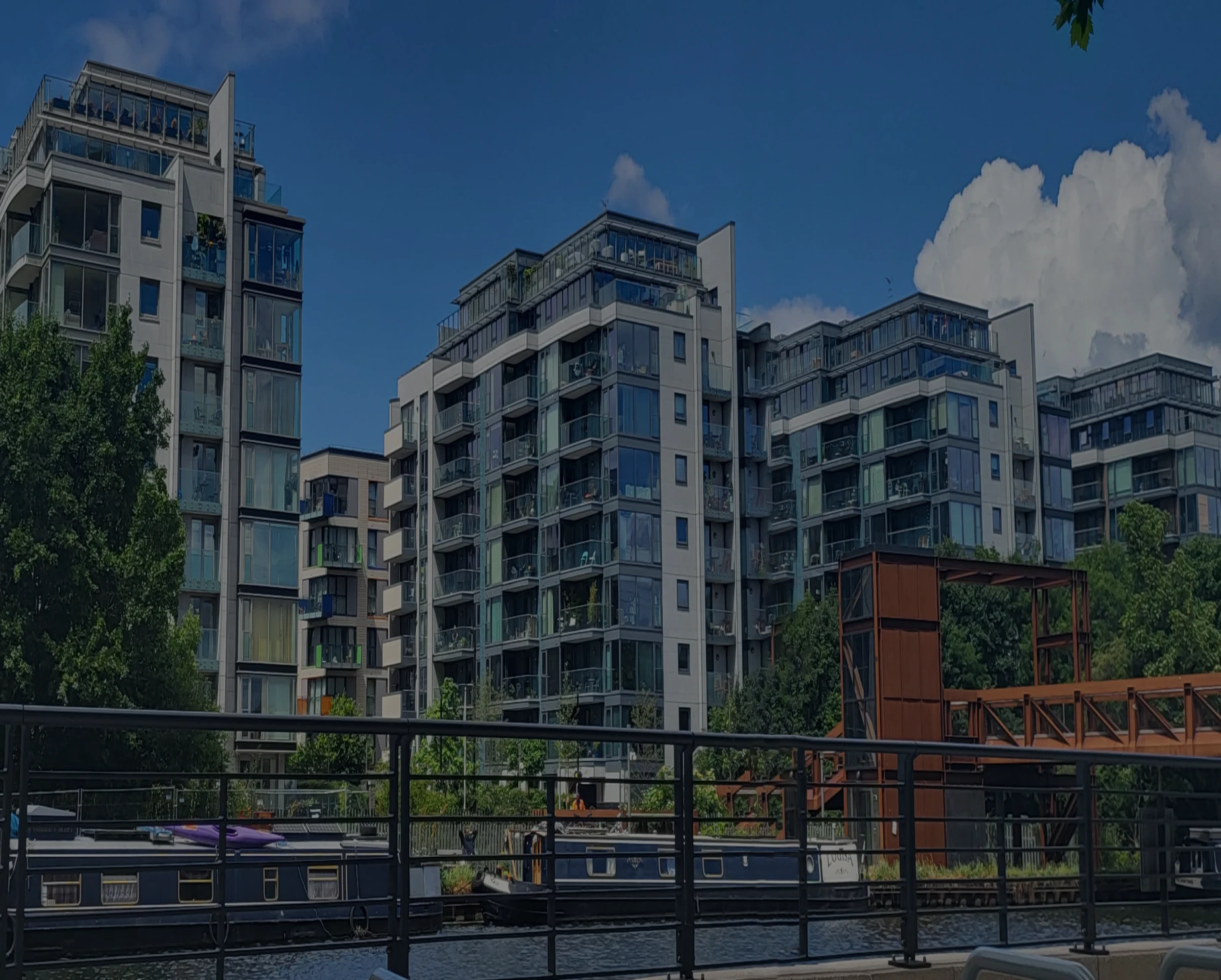

Transition: Our problem not yours
Our onboarding team will visit site to catalogue what we need to manage, set up budget templates, benchmark and database key lease clauses, and for complex sites our Facilities Management team will also inspect to understand in detail plant and equipment on site. Ringley Law will set up company and ownership registers all ahead of your nominated Relationship Manager taking over.
Block Management Packages
An online service, like internet banking: we run demands, arrears, service charge accounts & legal admin, you set the budget and upload invoices to pay
How to change Managing Agent
Changing Managing Agent needn’t be daunting, we have a team dedicated to gathering information, benchmarking leases and setting up plant registers
Learn moreRingley’s Top 10 Tips
There’s a lot you need to know to run the service charge properly: politics, law, building pathology, financial accounting, company matters, here’s a few tips
Learn moreCan’t afford a Managing Agent?
We understand the minimum fees of a full block management service may be prohibitive to small blocks – that’s why we created
www.servicechargesorted.co.uk
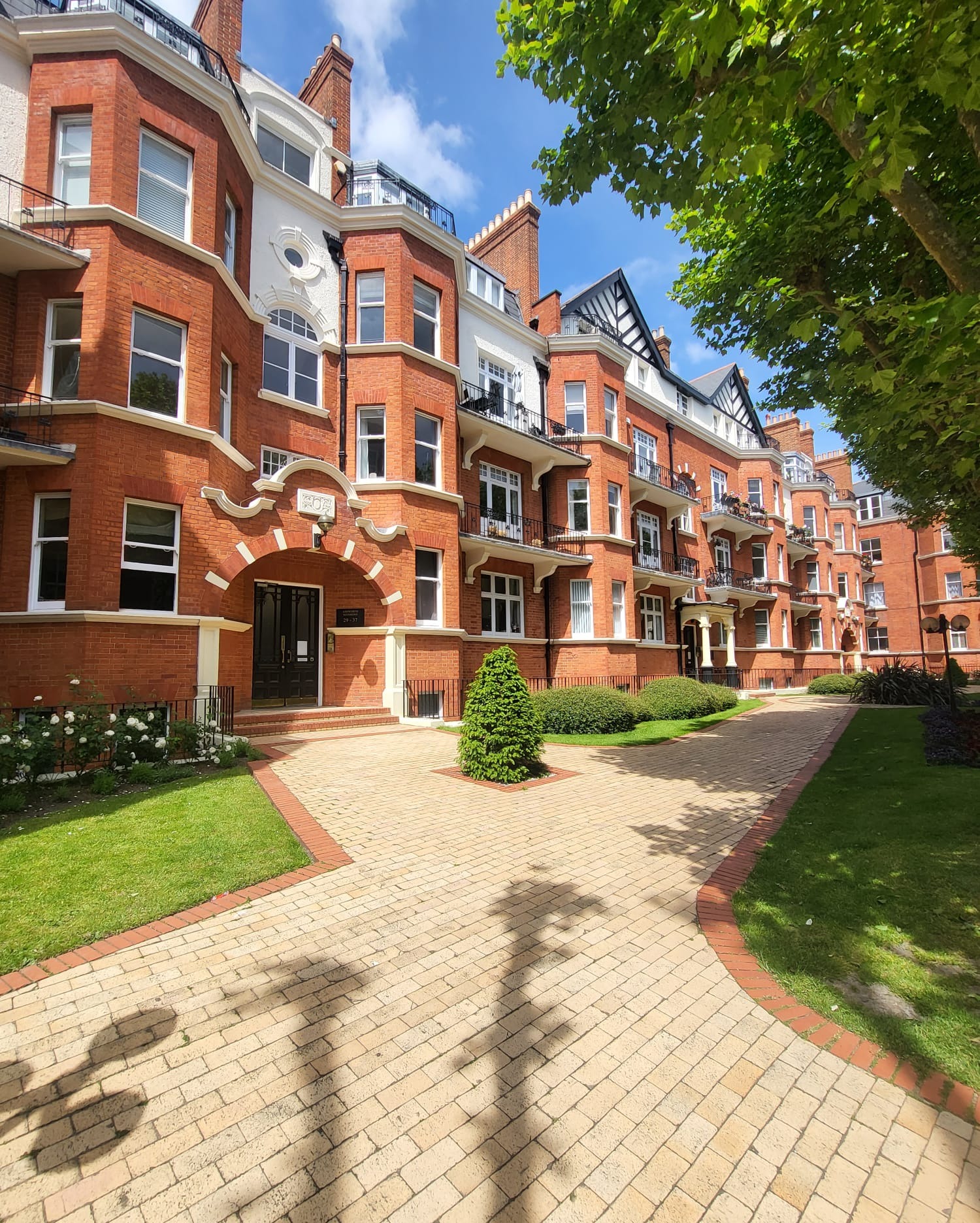
The Ringley Group is regulated by all three major bodies - Royal Institution of Chartered Surveyors (RICS), the Solicitors Regulation Authority, and the Financial Conduct Authority.






We have professional memberships in The Property Institute, The Association of Rental Living, The Institute of Fire Safety Managers, Chartered Association of Building Engineers.








We empower teams out on site
Site staff are the eyes and ears of the developments we manage, they are fully connected to our customer relationship management systems. The work they do is visible to residents, e.g., day books and end of shift inspections on the Ringley Gateway portal.
We see success as the emotional connection of each resident to where they live, so the task is simple... to empower site teams to make a difference on resident at a time.
We hire and place a range of site staff including: Concierge, Caretakers, Housekeeping, Cleaners, Gardeners, Maintenance Engineers and more…
read more about site staff solutions
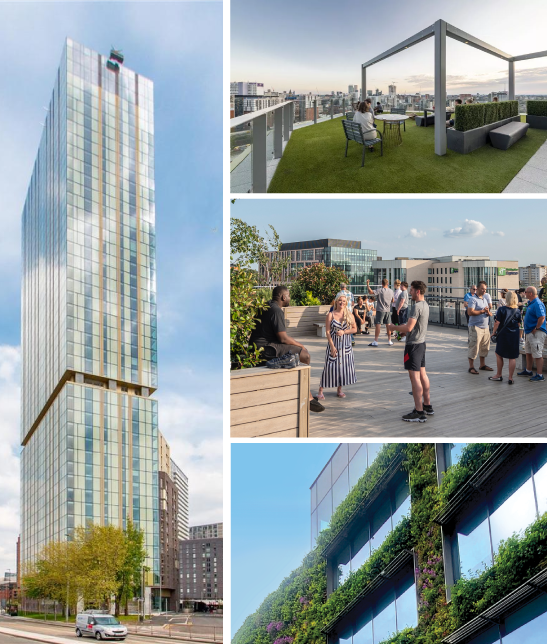
Block Management Reviews

"I have been a tenant with my partner in a flat in Hunslet House over a year. We recently moved out but we were really happy with the flat and management. The process went smoothly from the beginning until the very last day when we handed the keys over. Thank you to my lettings agent and caretaker for all your help and support during the contract. I wish you all the best and are grateful for going above and beyond to answer promptly each time."
| Customer 90 days ago |

"Working with the estates team has been an absolute pleasure. As a contractor, I truly appreciate how professional, organized, and supportive this management team is every time we’re on site. They are always helpful, quick to communicate, and consistently ensure that everything runs smoothly. Their positive attitude and commitment to teamwork make our jobs easier and more enjoyable. It’s rare to find a group so dedicated to creating a productive and respectful working environment. I look forward to every project we get to complete together. "
| Lee Newman 19 days ago |

"We have had a problem with noise from the flat above us in Lady Isle House Ferry Court Cardiff. We contacted a Mr Paul Staniforth who immediately became involved and addressed the situation. We really do appreciate what he has done for us and cannot thank him enough. Once again a big thank you to Mr Staniforth. The noise above was intolerable."
| Shane, 2 days ago |
|
|
We work alongside those deploying capital: our VirginLand by Ringley identify sites, our capital markets team work on equity and debt, our Asset Managers act as Employer’s Agent during the build for Project Monitoring. Towards Practical Completion we will be preparing always to mobilse new assets, take plant handover, recruit great teams and lease up fast.
|
|
We work to enhance the value of our Client’s asset and demonstrate good governance. To us this means engaging with leaseholders, residents and other stakeholders to ensure they are engaged with the management of each development.
|
|
Our aim is to make Management Company Directors feel empowered: to us this means 100% transparency and advising them of the options available to support decision making. We know volunteer directors have a day job, so work to delivery what they need in a timely manner and guide them on the decisions we need.
|
|
Within The Ringley Group we have a range of professional practices to enable transactions: Land Find, Valuers, Surveyors, Engineers and of course Ringley Law.
We work closely with official receivers, asset owners, lenders and tax consultants to support property owners throughout each assets lifecycle. |
Ringley is a group of companies. We are a diverse bunch with far reaching expertise in law, engineering, fire surveying and facilities management. Our data-led in-sourced model will save you money and we will listen, understand your goals and get things done. We are innovative and solutions oriented.
- 100% transparency
- to find solutions
- focused committed people
As a group of companies we are a diverse bunch with enough experts on board to be a one-stop-property-shop. We listen and align to each Client's goals so each of us knows what needs to be done all the while remaining innovative and solutions oriented - as a team - One Ringley.
- 100% transparency
- to network and find solutions
- focused committed people
Our Block Management Team
The key to our success is our people.

Best places to eat out in London Bridge

History of London Bridge

Most prestigious roads in London Bridge

Things to do in London Bridge

London Bridge - Cultural Scene
London Bridge holds a remarkable place in the history of London, with its origins stretching back nearly two millennia. The first version of London Bridge was built by the Romans around AD 50, marking the site as a crucial crossing point over the River Thames and facilitating the growth of Londinium, the Roman settlement that would become London. Over the centuries, London Bridge was reconstructed several times, reflecting the city’s evolving needs and architectural advances. One of the most famous versions of London Bridge was the medieval stone bridge completed in the 12th century under the reign of King Henry II. This London Bridge was unique in that it was lined with shops, houses, and even a chapel, making it more than just a means to cross the river—it was a vibrant community hub. The bridge witnessed significant historical events, including executions, fires, and even attacks, all of which contributed to its legendary status in London’s rich tapestry.
The history of London Bridge is also marked by dramatic transformations and fascinating stories. By the 19th century, the medieval London Bridge was no longer adequate for the demands of a growing metropolis, leading to the construction of a new, sturdier granite London Bridge, which opened in 1831. This London Bridge served London well for over a century before becoming famously “sold” in 1968 to an American entrepreneur, who transported it stone-by-stone to Lake Havasu City, Arizona, where it was reconstructed and still stands today. The current London Bridge, completed in the 1970s, is a modern concrete and steel structure designed to handle heavy traffic while honoring the legacy of its predecessors. Throughout its long existence, London Bridge has not only served as a vital crossing point but also as a symbol of London’s resilience, adaptability, and historical depth. From its Roman beginnings to its contemporary form, London Bridge remains an enduring icon in the story of the city.
Visit our main Pages
Ringley Group
Block management
Asset Management
Leasehold Guidance
Ringley Law
London Bridge, located in Central London, is a historic and vibrant area known for its iconic landmarks, riverside setting, and exceptional transport links. London Bridge blends culture, commerce, and modern living, attracting professionals, tourists, and investors. With its mix of heritage and cutting-edge developments, London Bridge continues to be one of the city’s most dynamic locations.
Here are some of the most prestigious roads and areas in London Bridge:
Tooley Street is a prominent address lined with modern apartments, historic warehouses, and direct access to landmarks like Tower Bridge and Hay’s Galleria.
Borough High Street is a sought-after thoroughfare offering stylish residences above shops, rich history, and close proximity to Borough Market.
Shad Thames is a prestigious riverside street known for its luxury converted warehouses, cobbled walkways, and views of the Thames.
Crucifix Lane is a desirable residential road featuring boutique developments and excellent access to transport and South Bank culture.
Weston Street is a quiet and exclusive address offering contemporary apartments just moments from The Shard and London Bridge Station.
London Bridge’s most prestigious roads combine city living with riverside charm and architectural heritage. With world-class amenities, cultural institutions, and unbeatable transport, London Bridge remains one of Central London’s most desirable and high-profile neighbourhoods.
Visit our main Pages
Ringley Group
Block management
Asset Management
Leasehold Guidance
Ringley Law
London Bridge, one of London’s most iconic areas, is not just known for its historic landmarks and riverside views but also for its dynamic and diverse food scene. With everything from trendy food markets to upscale restaurants and cosy cafés, London Bridge is a hotspot for food lovers. Here are some of the best places to eat in London Bridge:
Padella in London Bridge: A wildly popular pasta bar serving freshly made Italian dishes like pici cacio e pepe and tagliarini beef shin ragu.
Borough Market in London Bridge: One of London’s oldest and most famous food markets offering everything from gourmet cheese and cured meats to Ethiopian stews and vegan treats.
Flat Iron in London Bridge: A stylish steakhouse serving quality cuts at affordable prices, with a no-reservations policy and free popcorn while you wait.
Lobos Meat & Tapas in London Bridge: A cosy Spanish restaurant specialising in rich, meaty tapas and bold flavours in an intimate setting.
Bao Borough in London Bridge: A sleek, minimalist Taiwanese eatery offering pillowy bao buns filled with pork, chicken, or tofu, alongside inventive sides.
Wright Brothers in London Bridge: A classy seafood and oyster bar located near Borough Market, known for fresh oysters and sustainably sourced fish.
El Pastor in London Bridge: A buzzing Mexican taqueria serving freshly made tortillas, tacos al pastor, and vibrant margaritas.
Arabica Bar & Kitchen in London Bridge: A stylish Levantine restaurant offering mezze plates, grilled meats, and a modern take on Middle Eastern cuisine.
Ting at The Shard in London Bridge: A fine-dining experience on the 35th floor of The Shard, with sweeping views of the city and a refined Asian-British menu.
Black & Blue in London Bridge: A modern steakhouse offering juicy grilled meats, burgers, and hearty comfort food in a sleek setting.
Pizza Pilgrims in London Bridge: A lively pizzeria known for its Neapolitan-style pizzas, friendly vibe, and signature dips.
Tapas Brindisa in London Bridge: A well-loved Spanish spot with rustic décor and a traditional menu of tapas and sharing plates.
Hutong in London Bridge: A glamorous Northern Chinese restaurant located in The Shard, offering dim sum, duck, and panoramic skyline views.
Caravan Bankside in London Bridge: A trendy café-restaurant with a global menu, craft coffee, and industrial-chic design.
The Coal Shed in London Bridge: A sleek, modern restaurant focusing on coal-roasted meats and fish, with rich sauces and elegant plating.
London Bridge’s vibrant food offerings reflect the neighbourhood’s blend of old and new, bringing together street food staples and high-end dining under one skyline. Whether you're visiting for lunch at Borough Market or dining sky-high at The Shard, there's no shortage of flavour and atmosphere in this iconic part of the city.
Visit our main Pages
Ringley Group
Block management
Asset Management
Leasehold Guidance
Ringley Law
London Bridge, in central London, is a historic and bustling riverside district brimming with landmarks, culture, and vibrant city life. From iconic views to hidden gems, the area offers a rich blend of history, art, and modern attractions.
Here are some top things to do in London Bridge:
The Shard in London Bridge is Western Europe’s tallest building, offering breathtaking panoramic views from its observation deck.
Tower Bridge in London Bridge is an iconic Victorian bascule bridge featuring a glass-floor walkway and fascinating exhibition spaces.
HMS Belfast in London Bridge is a historic Royal Navy warship turned museum, allowing visitors to explore its decks and stories of war at sea.
Borough Market in London Bridge is one of London’s oldest and most famous markets, known for its atmosphere, artisanal goods, and food culture.
The Old Operating Theatre Museum in London Bridge is a fascinating glimpse into 19th-century surgical history housed in a hidden attic above a church.
Southwark Cathedral in London Bridge is a stunning Gothic church rich in history, peaceful gardens, and cultural events.
Hay’s Galleria in London Bridge is a beautiful riverside arcade filled with shops, public art, and a striking central sculpture.
The Scoop in London Bridge is an open-air amphitheatre hosting free performances, film screenings, and public talks during the summer.
Potters Fields Park in London Bridge is a scenic riverside park offering unbeatable views of Tower Bridge and space for picnics or relaxation.
London Bridge Station Public Art features a rotating display of contemporary works, enhancing the daily commute with creativity.
The Fashion and Textile Museum in London Bridge offers colourful exhibitions on British fashion design, textiles, and industry heritage.
Winchester Palace Ruins in London Bridge are the remains of a 12th-century bishop’s palace, open to explore along a riverside walk.
Golden Hinde in London Bridge is a full-scale replica of Sir Francis Drake’s famous ship, offering interactive tours and educational events.
Thames Path Walk in London Bridge is a scenic riverside route perfect for soaking in views of the city’s landmarks and skyline.
Menier Gallery in London Bridge is a contemporary art gallery housed in a historic chocolate factory, showcasing exhibitions by emerging and established artists.
London Bridge is a dynamic hub where London’s rich past meets cutting-edge culture—making it an essential stop for both discovery and inspiration.
Visit our main Pages
Ringley Group
Block management
Asset Management
Leasehold Guidance
Ringley Law
London Bridge, London, is a historic and culturally significant area known for its iconic landmarks and riverside atmosphere. London Bridge features famous sites like Borough Market, The Shard, and Southwark Cathedral, making London Bridge a central point of heritage, gastronomy, and artistic flair in the heart of the capital.
London Bridge’s cultural scene thrives with venues such as the Unicorn Theatre and Southwark Playhouse, where London Bridge hosts a variety of theatrical and musical performances. London Bridge’s galleries, pop-ups, and exhibitions celebrate both local and global talent, cementing London Bridge’s place in the city’s creative and performing arts landscape.
London Bridge comes alive with festivals, food tours, and riverfront events that reflect London Bridge’s lively and diverse spirit. From immersive theatre to artisan markets, London Bridge offers a continuous flow of cultural experiences. With its blend of tradition and modern innovation, London Bridge remains a vibrant hub of London’s cultural identity.
Visit our main Pages
Ringley Group
Block management
Asset Management
Leasehold Guidance
Ringley Law





